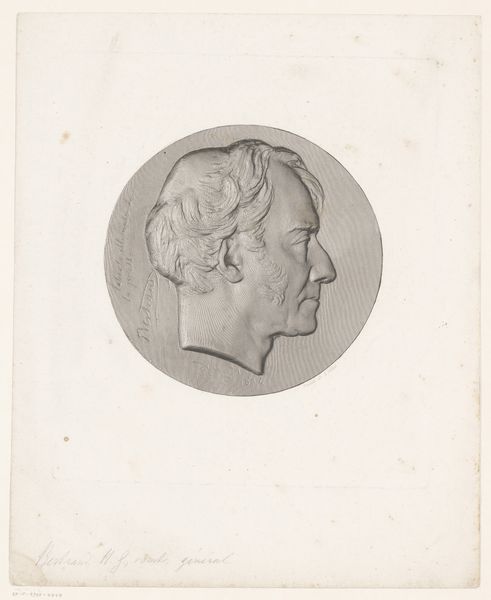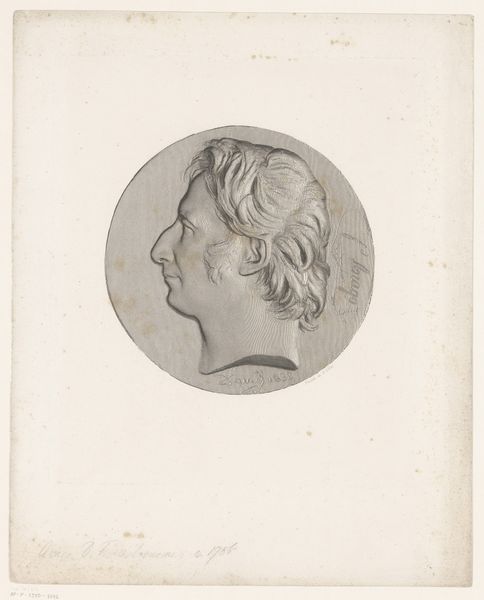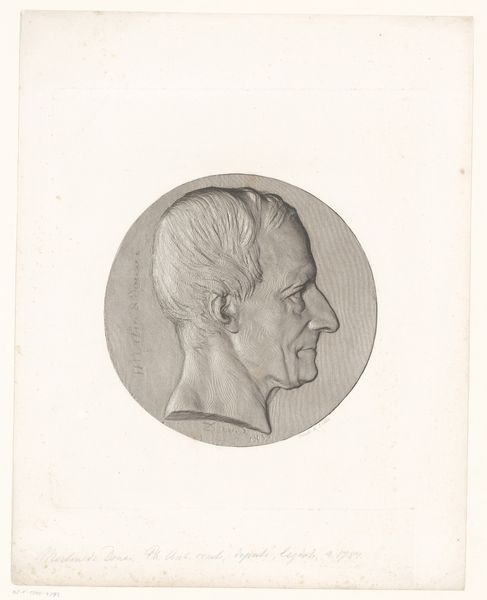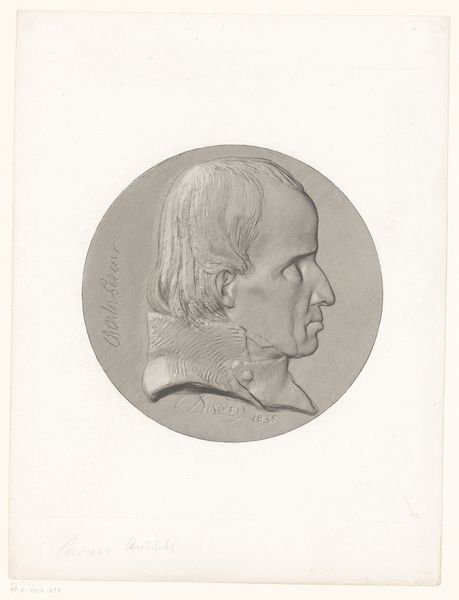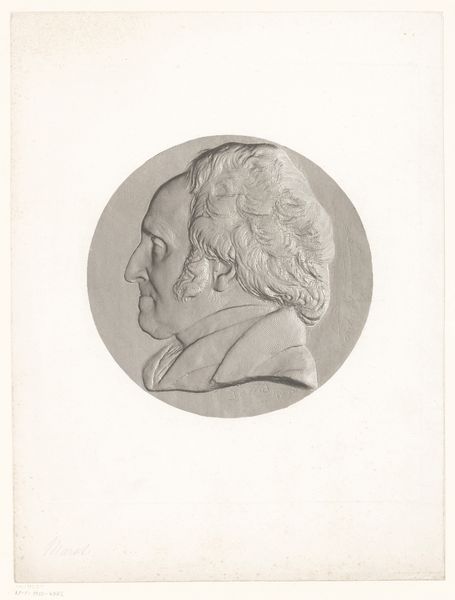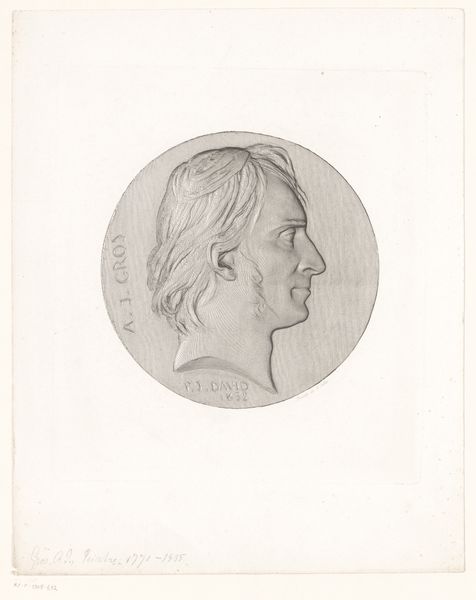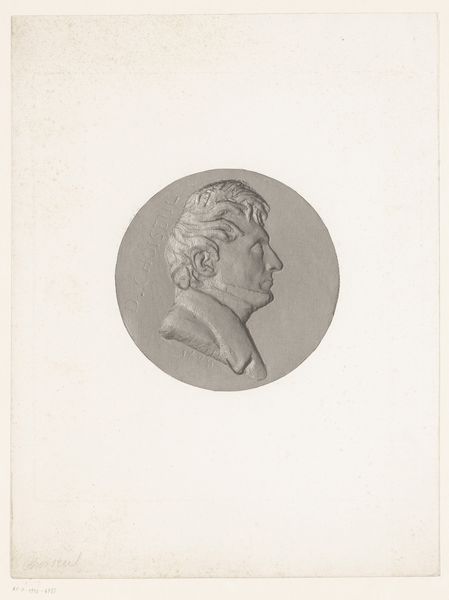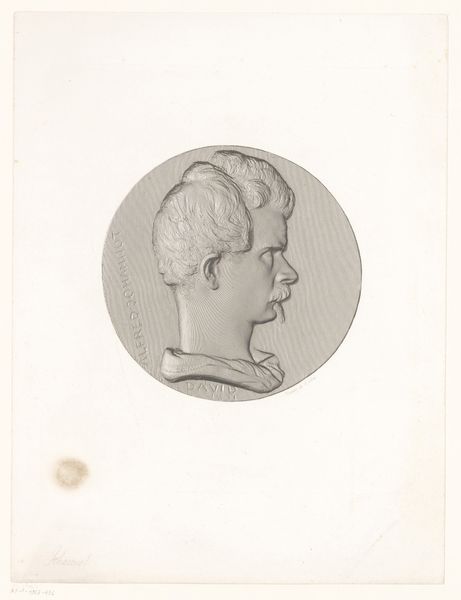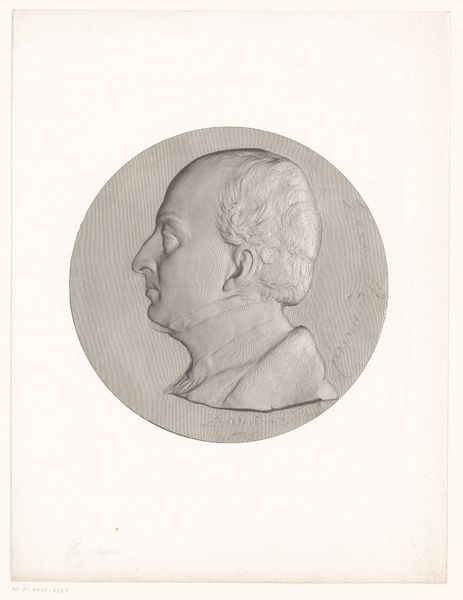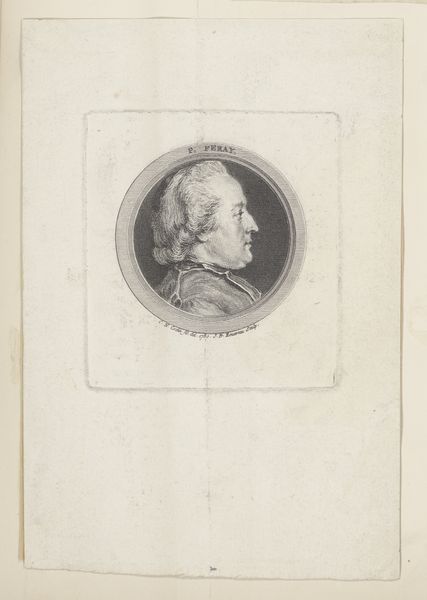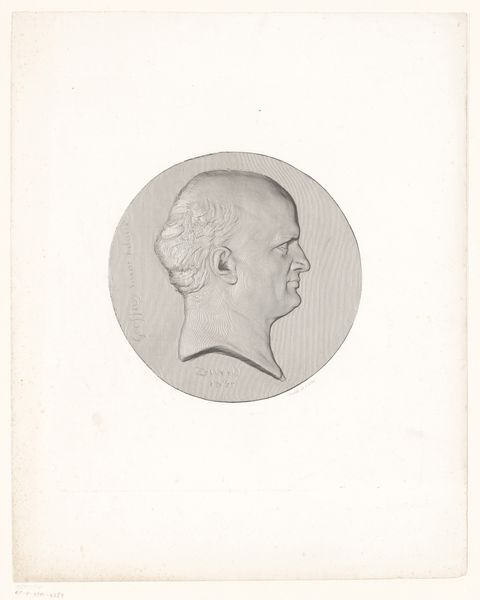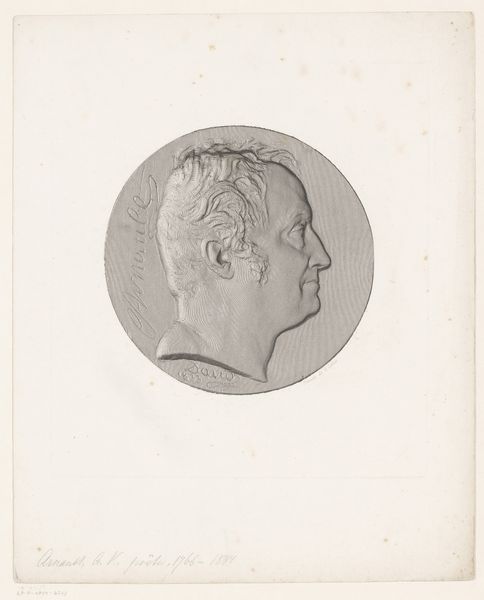
drawing, print, graphite, engraving
#
portrait
#
drawing
#
neoclacissism
# print
#
pencil drawing
#
graphite
#
portrait drawing
#
engraving
Dimensions: height 239 mm, width 214 mm
Copyright: Rijks Museum: Open Domain
Editor: This is an engraving titled "Medaille met portret van Gaspard Monge," dating roughly from 1820 to 1840, by Achille Collas. It's a profile portrait, rendered with incredible precision; the details feel almost photographic, even though it's an engraving. What strikes you most about it? Curator: I'm drawn to how it reflects the culture of commemoration that flourished in post-Revolutionary France. Gaspard Monge, a mathematician, was a key figure in establishing the École Polytechnique. This institution was pivotal in shaping the meritocratic ideals of the time by opening up access to scientific education regardless of social origin. Editor: So, this engraving serves as a sort of… public endorsement of Monge's legacy? Curator: Precisely. Medals and portraiture, readily reproducible through engraving, circulated images of influential figures throughout society, shaping public perception. Notice how the Neoclassical style – the clean lines, the idealized form – evokes a sense of rationality and order, aligning Monge with the Enlightenment values the new regime aimed to embody. Editor: It’s interesting how art becomes a tool for building a specific historical narrative. Do you think its display location affects that narrative? Curator: Absolutely! A print like this could be found in academic institutions, public offices, or even private homes. Its placement signals the intended audience and its social function. Where it hangs speaks volumes about who controls the narrative and whose values are being promoted. Editor: It makes you wonder about all the hidden layers of meaning behind even the simplest images. Curator: Exactly! Art doesn’t exist in a vacuum. Examining its production, dissemination, and reception within a particular social context reveals much about the era that produced it. Editor: I'll definitely look at art differently from now on. Thanks!
Comments
No comments
Be the first to comment and join the conversation on the ultimate creative platform.
